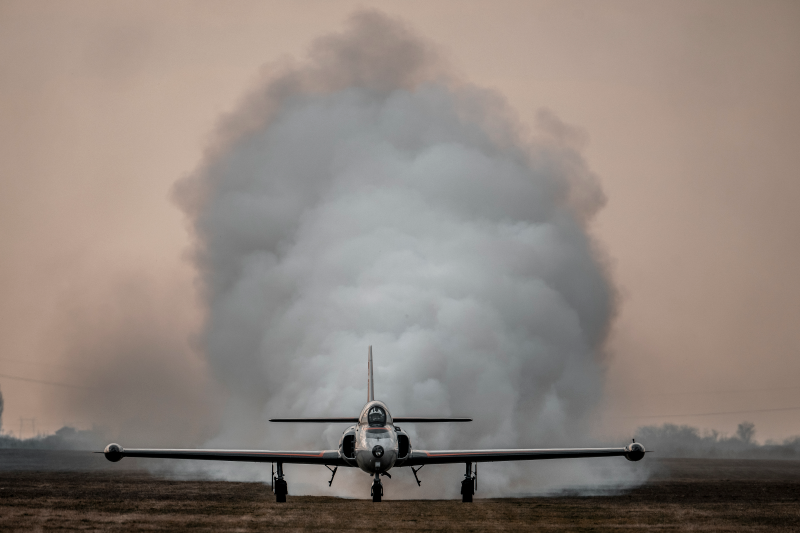Aerial photography has always held a special place for me. Photographing airplanes and helicopters carries its own thrill – the speed, the adrenaline, the rush of flight and with the Galeb Team, I experienced all of that at once, along with a flight through the history of a legendary aircraft – the Galeb G2.
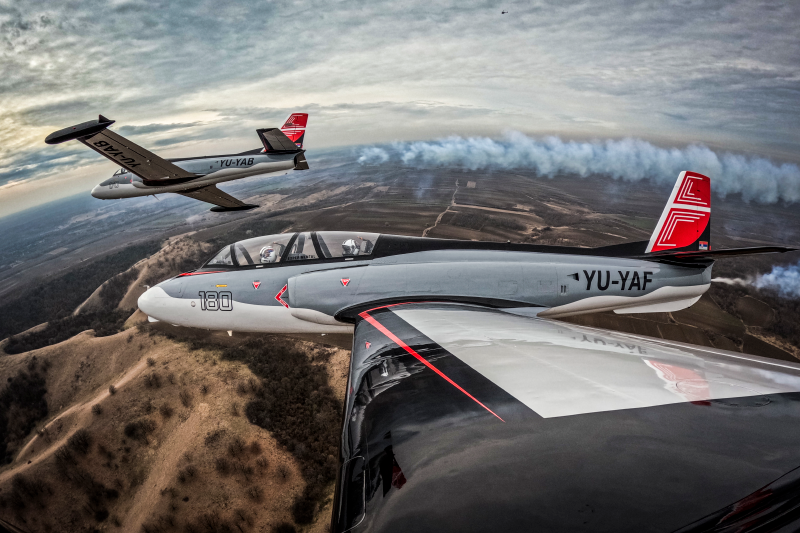
This is not just any airplane. The Galeb G2 has exceptional historical significance, and the fact that it is still flying today, even with a slightly different purpose, is fascinating to me. As a child, I was captivated by the Galeb G2 and G4, and now I had the opportunity not only to fly in one of them but also to capture the art of their flight through my lens.
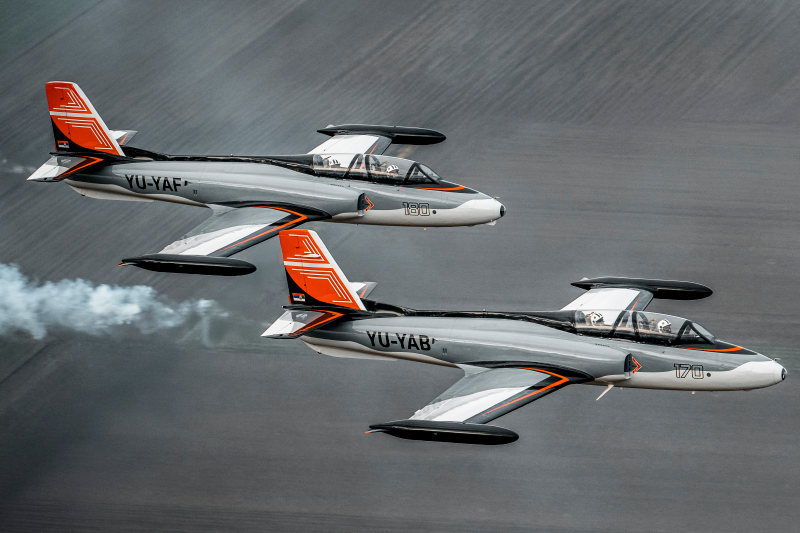
That heritage, combined with the passion and enthusiasm of the Galeb Team, was my strongest motivation for this photoshoot. Aerial photoshoots like this are always special for several reasons. Most of the time, I am in another airplane or helicopter, and the experience of photographing while in flight is unlike anything else. Airplanes fly past at incredible speed, and in that fleeting instant you must both live the moment and capture it. It is a truly unforgettable experience, and despite the hundreds of hours I have spent photographing in the air, I still get excited every time because each flight is different.
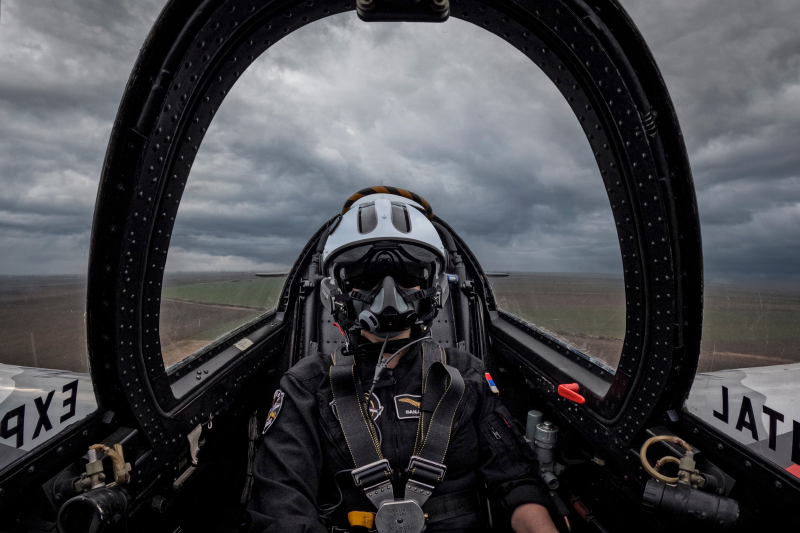
My goal was to capture the uniqueness of these flights to those who may never have the chance to experience them firsthand, while also capturing the artistry of flying the Galeb G2. None of this would have been possible without the Galeb Team.
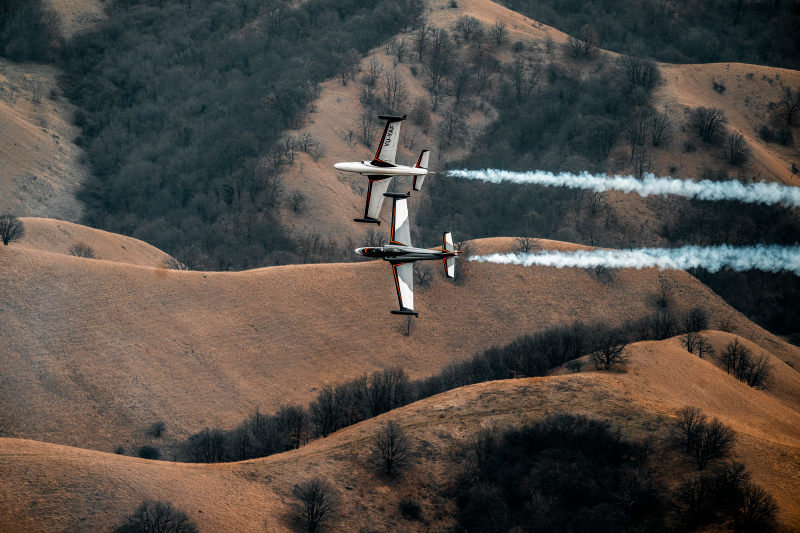
Their passion and love for aviation are evident in every maneuver, and with each flight you can feel how deeply they live this story. That is why every flight is a special experience – for them, for me, and for everyone who watches them in action.
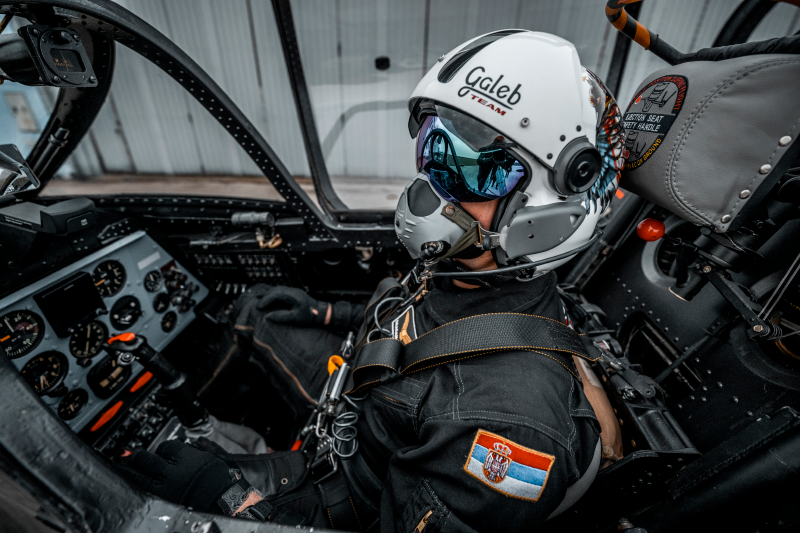
Additionally, this kind of photoshoot requires versatile techniques, so I used a handheld camera, remote-controlled cameras, GoPro cameras, and drones.
HISTORIC FLIGHT OF THE FAMOUS GALEB
The first flight of the legendary Galeb took place on a hot summer day 64 years ago. Designed as a jet trainer for military pilots in the former Yugoslavia, it followed international standards in jet design. Soon after, it became the first domestically produced jet aircraft to enter serial production.
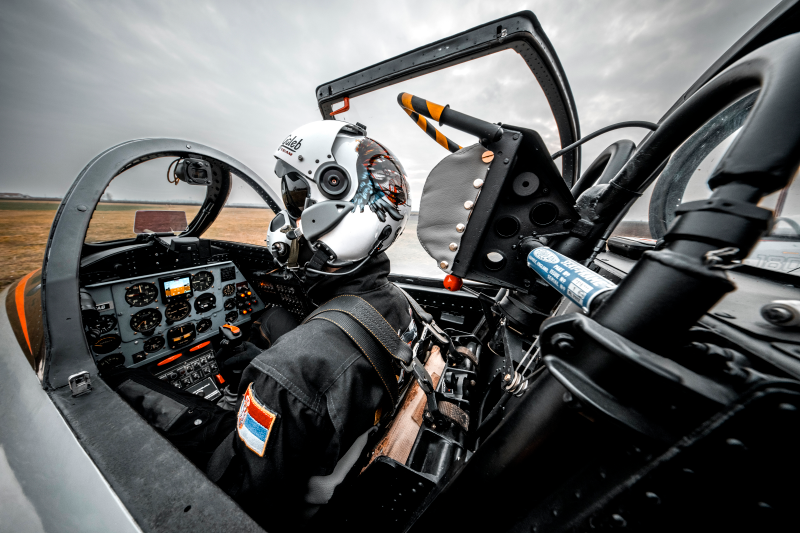
Between 1965 and 1985, the SOKO plant in Mostar produced 248 G-2 Galebs, most of which proudly served in the Yugoslav Air Force. Some were later delivered to air forces around the world. Renowned for their durability, many logged thousands of flight hours, a true testament to their exceptional design and build quality.
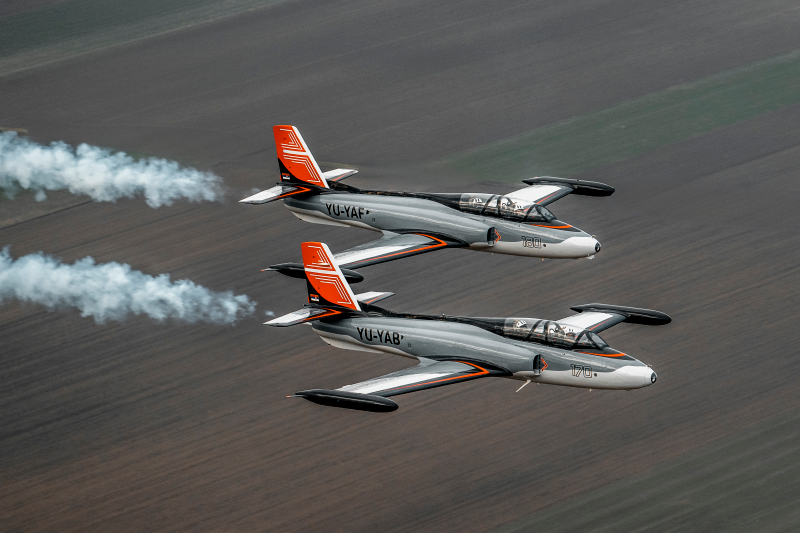
Since the 1980s, this distinctive aircraft has found a home in private collections and now dazzles crowds at airshows, not just across the Balkans, but around the world. Galeb Team is the proud owner of two G-2 Galeb aircrafts.
GALEB TEAM GAVE NEW LIFE TO GALEB G2
The Galeb G2 is truly an incredible aircraft. It can fly as a combat machine, but at the same time, its movements can resemble a ballet in the sky. After completing its military career, the Galeb G2 found its way into the hands of aviation enthusiasts and private pilots. That’s exactly where we acquired our two aircraft, originally built in 1968. Our goal was not to let this airplane fade into oblivion, but to adapt it, give it a new purpose, and extend its life – says Bojan Matic, pilot and manager of Galeb Team.
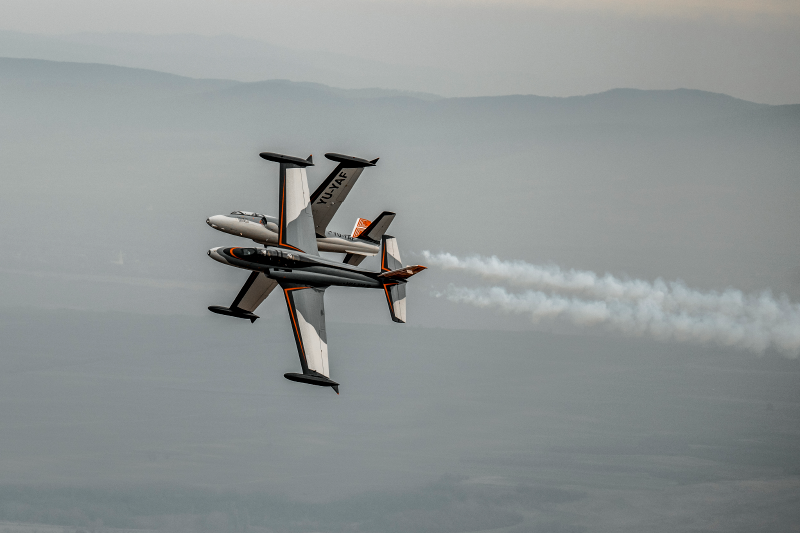
This group was formed two years ago when a group of pilots and aviation enthusiasts, decided to fulfil their childhood dream. They started from scratch and built a story that is yet to unfold. Their idea was to fly the Galeb at airshows and similar events, but to make that happen the airplanes had to be fully restored.
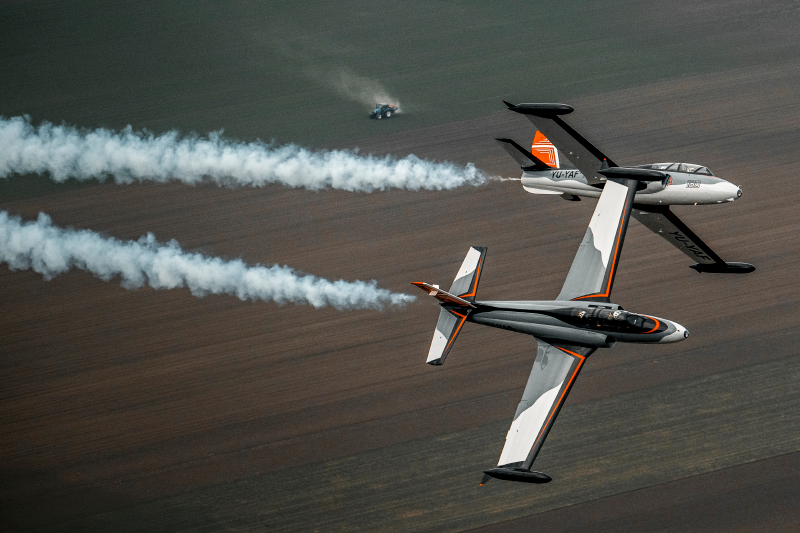
-The reconstruction was extensive because we had to return these airplanes to the state of safe flying condition. That was no easy task, since the aircraft was built more than 50 years ago, finding parts was extremely difficult. Yet our determination and desire to succeed were stronger than the obstacles, and we managed to get everything done. Worn-out parts were replaced, and the electronics were modernized. We used the Garmin G5, a compact digital cockpit display that shows key flight information such as altitude and speed, replacing old mechanical gauges with a clear, modern screen – Matic explains.
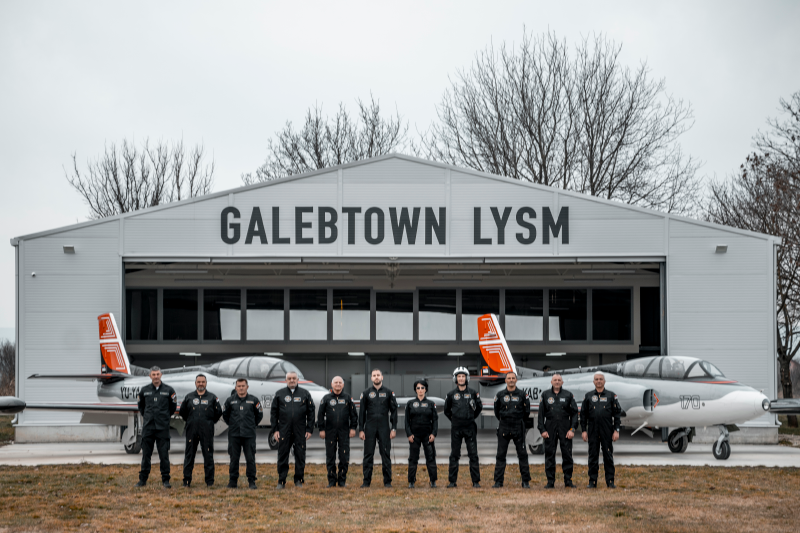
Although the Galeb G2 was not originally designed as an aerobatic aircraft, it can still capture the audience’s attention at airshows and leave them in awe with its graceful maneuvers, beauty, and elegance in flight. Special credit goes to the pilots of the Galeb Team, some of whom are former members of the famous aerobatic group Leteće zvezde (Flying Stars). With countless hours of flying experience, they truly know how to bring out the very best from this aircraft.
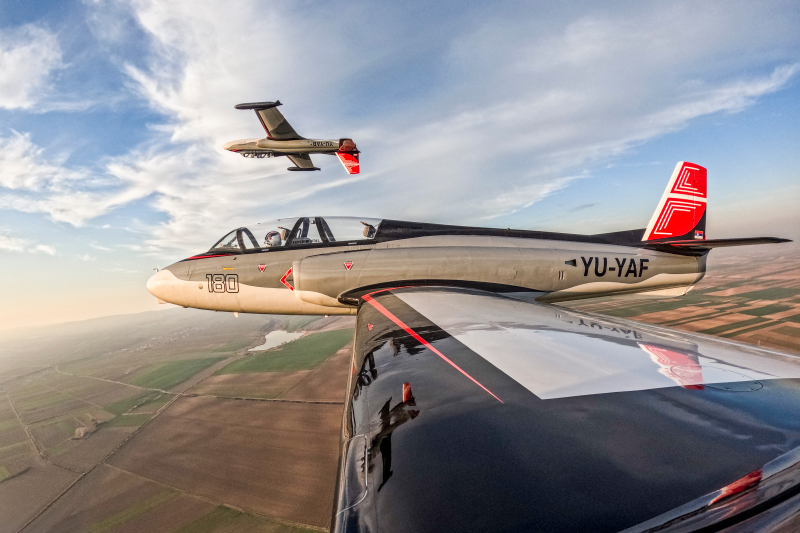
What makes the Galeb Team especially recognizable are their synchronized formation flights performing aerobatic maneuvers in pairs with precision and artistry.
PREDRAG VUCKOVIC EXTREME PHOTOGRAPHER – MASTERY BEHIND THE LENS
Predrag Vuckovic has many years of experience in aerial photography, with more than 500 hours of flying and shooting from both airplanes and helicopters. This experience gives him a unique advantage because he feels just as natural in the air as he does on the ground. He has also developed knowledge about the capabilities of different aircrafts, especially when it comes to aerobatics.
He has gained his experience worldwide, photographing competitive series such as the Red Bull Air Race, as well as individual projects and airshows. His specific set of photographic skills, combined with the unique vision he has developed over the years, results in extraordinary aerial images that capture the very essence and beauty of flight, the aircraft, and the emotion of the pilots.To achieve unique perspectives, he often flies in a second airplane or helicopter, and also uses specially mounted cameras attached to the wings of aircraft or positioned inside the cockpit.
For photographing the Galeb Team, he used the following professional equipment: Nikon cameras with remote controls, Various Nikon lenses, specially mounted cameras and GoPro units placed on the wings and inside the cockpit!



